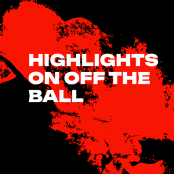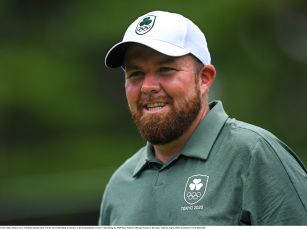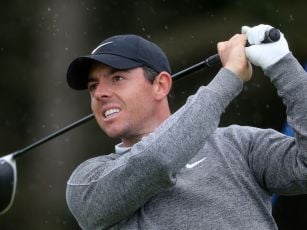"Athletics is a sport of measurement. We measure everything. Medals is the most obvious quantifiable outcome from what we do, but it is still an outcome."
Those are the sentiments of Athletics Ireland's new High Performance Director, Paul McNamara, who says that in order for Irish athletes to excel at the highest level, work has to be done from the bottom.
Ireland's promising performance in the Olympics last summer has shown that competitors representing the country are more than capable of competing for medals on the biggest stages.
Frustrations
While performances at an array of athletics showpieces look good on paper, the real work is done in between.
Training can be a problem for some athletes when it comes to what facilities are available to them and Ireland's current coaching structure, McNamara says, presents "frustrations" for athletes.
"What we haven’t had here in Ireland is a professionalised coaching structure, with full-time coaches on board," he tells Newstalk.com. "That’s going to be a challenge going forward.
"I guess the frustration for a coach with the wherewithal to be an elite high performance coach working with an elite high performance athlete, is having the time to go and do that. Invariably these athletes have full-time jobs.
"The idea is that we utilise full-time paid coaching. But again, who do these full-time paid coaches work with? Do we ask the athletes to leave the coaches they’ve worked with for so many years? My perspective is that we don’t do that.
"We look to create and engineer the platform that the coaches on the ground need to support their athletes.
"We need to view coaches and athletes as one performance unit, not as separate entities. That’s the biggest challenge. Coaches having the resources and the time that they need to put their athletes on the podiums."
The development has come from the increased numbers of talented youths within the association.
"What we are seeing in Ireland in the moment is a deluge of very talented youths and junior athletes. It’s a reflection of the work done by the development team over the last 10 years.
"When I started in the association 10 years ago we had less than 18,000 members. Now we have over 50,000.
"We do have more athletes and we do have a higher calibre of grassroots coaching. That’s reflected in higher standards in juvenile, youth and junior level.
"The National Juvenile Indoors last month at AIT [Athlone Institute of Technology], the number of records broken is phenomenal. That’s been the case year after year. We are seeing a glut of talented youth and juniors coming through.
"Some of the barriers to progress that we’ve had in the past have been lifted and we need to continue to lift those. The role of High Performance is to clear the path so that they can do what they want to."
Facilities
The desire to become the best in the world are there, so too are the facilities in some parts of the country.
The National Sports Campus in Abbottstown, while not entirely accessible to all athletes in the country, has signalled the country's intentions to develop High Performance athletes and offer them a viable option of completing their training within Ireland.
"Our very best athletes intend to build their own systems around themselves. We need to see who will benefit from those facilities out in National Sports Campus.
"Who can base themselves there? Can we build groups to work together?
"I would like to think some of our very best guys can base themselves there and our second tier of athletes and coaches can work around those guys to build functioning groups working in tandem."
These "functioning groups" would involve having a distributed network of performance services spread out into different regions.
This would allow athletes to travel to universities or third level institutes around the in order to access the facilities to train.
"Practicalities from day-to-day life will prevent a lot of people from basing themselves in Abbottstown. We need to work around the athletes other than vice versa."

Ciara Mageean competing at the 2017 European Indoor Athletics Championships in Belgrade. Mageean has proven herself as one of Ireland's most promising athletes over the past 12 months. Image: ©INPHO/Sasa Pahic Szabo
Distribution
Distribution of athletes around the country continues to be an issue for Athletics Ireland.
"Ireland is sort of unique in some regards in an athletics context. Our best athletes pop up in a very dispersed manner, according to population distribution."
Athletes are spread out over various small clubs around the countryside, with coaches facing similar difficulties in providing guidance and support.
One of the key challenges going forward will to be to try and find that 'platform' to bring coaches and athletes together.
Providing platforms is something that McNamara sees as the only method of developing the next generation of sprinters, runners and jumpers.
These platforms revolve around developing the athlete in training, providing them with both facilities and coaches, and helping them to adjust to the pressure of top level performance.

Inside the Institute of Sport High Performance Training Centre, National Sports Campus, Dublin. Image: ©INPHO/Morgan Treacy
Platforms
"The athlete support services out in the institute, there’s a sizable team of medical professionals - doctor, physio, nutritionist - that are already in place.
"These are all accessible to our athletes and that’s a very good base off which to start.
"The institute have only just rolled out their world-class facilities, so that’s a major addition to what’s there already. In terms of personnel on the ground and coaching, it would be my feeling that we really do have top class coaches."
The High Performance programme within Athletics Ireland works with around 145 athletes from youth to senior international level.
Tiers stretch from grassroots going all the way up to junior and include emerging talent youths who graduates to under-23 athletes, before making the jump to senior.
"It’s classified as development, international, world-class and podium.
"I don’t know if too many people realise there are that many athletes and that the coaching ratio between coaches and athletes is almost 1-to-1.
"We have very few coaches working with two or more athletes. What we need to do to be successful is to create the platform to support the coaches."

Fionnuala McCormack at the 2016 SPAR European Cross Country Championships Practice Day in Chia, Italy. The Wicklow native finished 20th in the marathon at the Olympic Games in Rio last August. Image: ©INPHO/Sasa Pahic Szabo
With this comes the increased pressure then to perform at the top level of competition and the expectations of podium finishes at major championships.
While measurements are important to illustrate how the athletes are improving, there also needs to be tangible targets and results to show that Ireland's best are benefitting from these investments.
"We need to measure the processes put in place that are going to facilitate that… We’re looking to measure the number of qualifiers to major championships and excel while there.
"The ultimate goal of any High Performance athlete is to produce the best performance when it counts most and that is at the major championships.
"A real index of how a High Performance unit is performing is when they go to these championships, are they performing there. That’s the critical thing."
You can read the first part of our interview with Paul McNamara, here.
Download the brand new OffTheBall App in the Play Store & App Store right now! We've got you covered!
Subscribe to OffTheBall's YouTube channel for more videos, like us on Facebook or follow us on Twitter for the latest sporting news and content.








